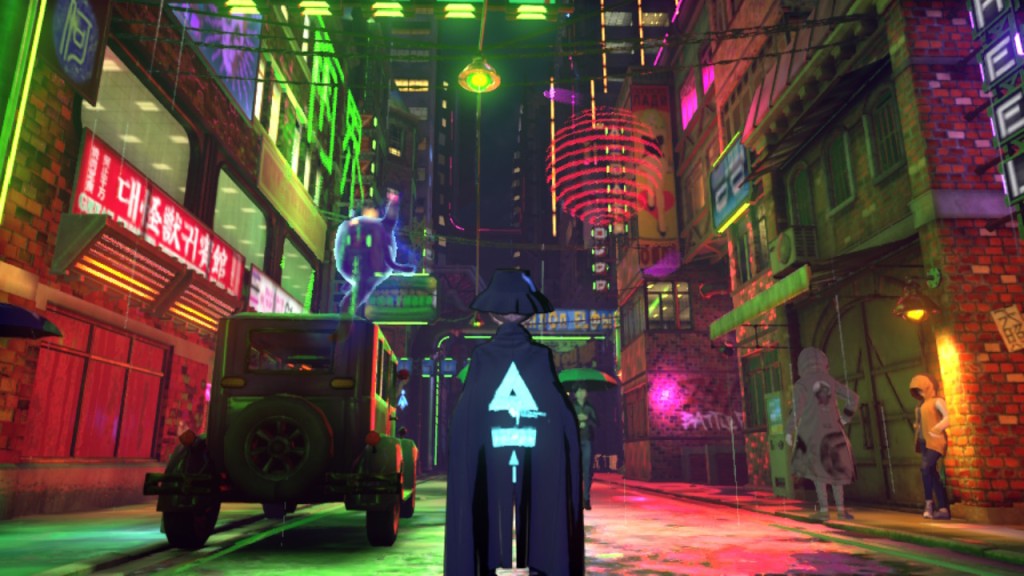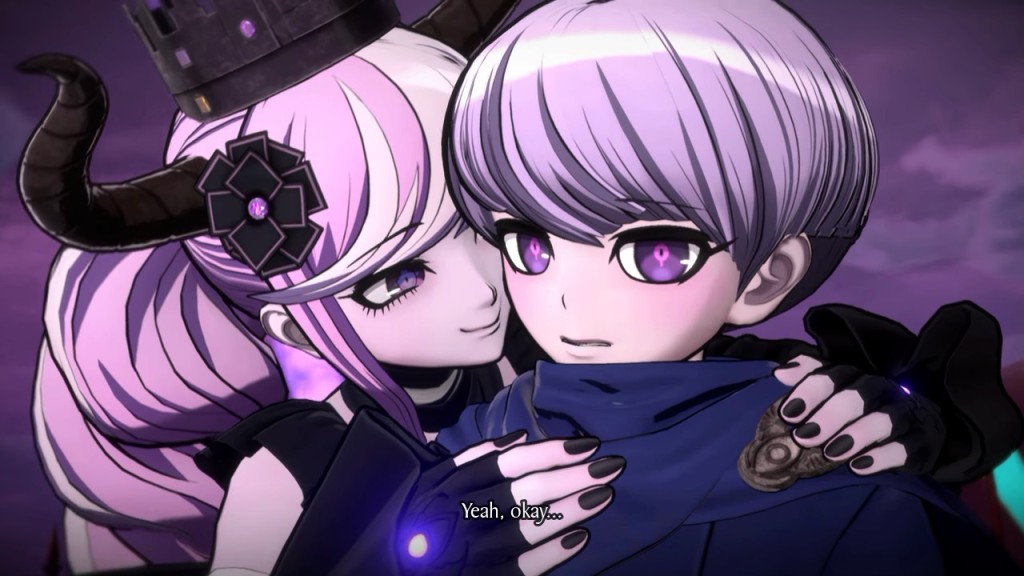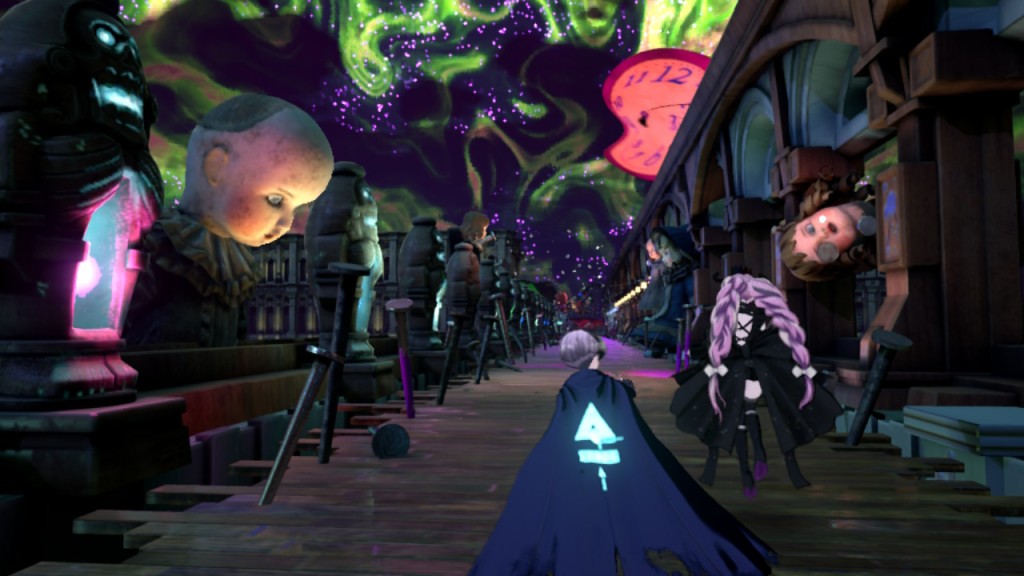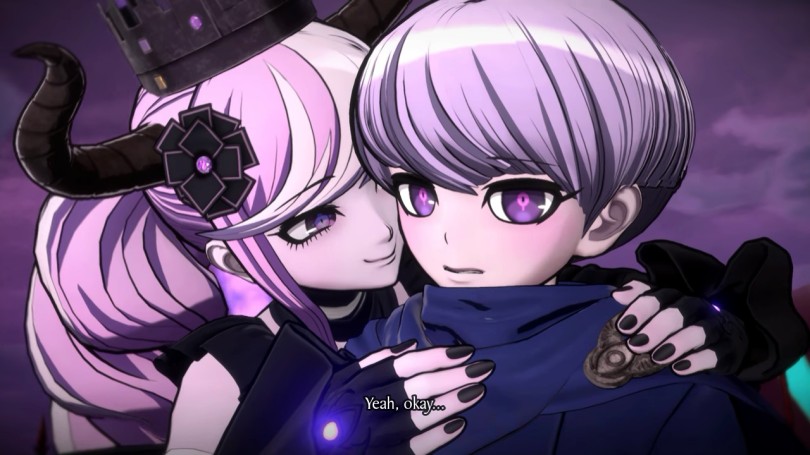A director calls a number of artists to a meeting. No one knows anything about the next project they’ll be working on. After coffee is served and everyone has gotten their share of cake, a commission is laid out along these lines — create a cyberpunk setting in the form of a city isolated from the outside world; a bit less cyber and a bit more punk. Insert stylish anime characters in it, sporting urban and comfortable clothing, wearing artsy makeup and piercings. With everything else, please go absolutely wild. No limits to the imagination, especially inside a dimension called the Mystery Labyrinth. If you want to defy space, time and gravity, you can. If you want to insert random elements in space disconnected from each other, you can. If you want to play with colors, textures, structures and use those assets you didn’t know what to do with, you also can. This game will be your canvas and we will be here to bring those ideas into fruition. In the city, where the story takes place, neon lights must be everywhere, except in shady areas. The color palette must be pink, pink, yellow, pink, purple, blue and pink. In this city it will rain constantly, which is a great opportunity to make the colors blend into the shimmering water covering the ground.


This is pretty much how I imagined a meeting taking place inside the developer’s headquarters. Since I live in a city where it rains at least once every day of the year, I’d give anything for those neon lights. The urban reality of Rain Code is very similar to my own, except we don’t have a shady mega-corporation responsible for the infrastructure, power supply and secret experiments… or do we? This requires a thorough investigation from the World Detective Organization! I will get in touch and will let you know about any further developments! I’ll try to steer clear from Halara Nightmare to avoid more debt. Even though she’s one of the best detectives, very efficient and insightful, her work is extremely expensive to contract.


Ok, let’s not digress any further. Master Detective Archives: Rain Code is a new series (or I hope it will be) developed by Spike Chunsoft and Too Kyo Games. The CEO of Too Kyo Games is Kazutaka Kodaka, the creator of the Danganronpa series, and the designer of Rain Code. Masafumi Takada, also having worked in the Danganronpa series, composed the beautiful soundtrack of Rain Code in his unique atmospheric jazzy style. The game was released last year (2023) and only for Nintendo Switch. Why the game is an exclusive, considering that many Spike Chunsoft games are also available on PC, beats my understanding. It is, however, a jewel on the Switch that risks being forgotten among the thousands of extraordinary games on the platform. In all its uniqueness, I think Rain Code is a niche game, and even on PC it would remain so. I don’t know why that is, or even why such a beautiful piece of art can be so fleeting. There’s not much people in the community talking about Rain Code, at least in the West (you know, that big country that The West is) but I believe it has a strong fanbase, spanning from East to West, with strength in dedication, although not in numbers.
Rain Code tells the story of Yuma Kokohead, a young man who wakes up in the lost-and-found section of a train station. Wouldn’t you know, he doesn’t remember who he is! Where did I hear this before? Ah, Utawarerumono and pretty much every other Japanese visual novel I could think of. As any other amnesia story, everything just goes a bit crazy from here, maybe a bit crazier than we’re used to. The thing is that Yuma has, within himself, something or someone who perfectly remembers who he is. A shinigami, or as we say in The West, a god of death! A goddess, to be more exact, and a beautiful one at it, who takes the form of a cute little ghost when she travels the real world with Yuma. Of course, this realization was very confusing to him. It seems like sometime in the past, he made a contract with this shinigami a la Death Note, and now he’s stuck with it, not entirely aware, if at all, of its consequences. Within his belongings, he also finds a letter with a contract to investigate something undisclosed at Kanai Ward, a city detached from the outside world and run by the Amaterasu Corporation, an all-powerful company with its fair share of secrets. He’s supposed to take the train and meet with the other Master Detectives, hoping that someone would remember who he is. That he did, but things didn’t go as expected.


From the time Yuma enters the train, we initiate our first investigation. At the end of the trip to Kanai Ward, Yuma is pretty much in panic. He doesn’t find the most welcoming party when he arrives either. He’s actually going to get arrested for a string of grisly murders that happened on the train. He is surrounded by the Peacekeepers, a special force dedicated to keeping peace, enforcing law and administering punishment (usually the latter). The good part is that we had time to gather a lot of evidence during the trip, and in the nick of time the shinigami halted time and opened a portal. Yuma was most likely kicked or punched into it by the shinigami and ended up in a place called the Mystery Labyrinth. The purpose of the labyrinth is, with the help of Shinigami, finding the truth about a murder case by solving a variety of puzzles and battles. Our weapon, the Solution Blade, suggestively taken out from inside Shinigami’s throat, holds the Solution Keys used to solve puzzles, answer questions, and battle with bosses.

Don’t expect the Labyrinth to be like the castles in Persona 5 convoluted with rooms, backtracking and hidden paths. The Mystery Labyrinth is very linear, despite being an alternate area called labyrinth, no backtracking and no exploration is necessary. The path is straightforward and in order to unlock a room you need to solve the mystery within it, which is always related to the case itself. It can be Crime Scene Recreations, Reasoning Death Matches (RDMs), Shinigami Puzzles, questions that pop up during chase/platforming sequences, and God Shinigami QTE/questions. There’s some variation to this depending on which chapter we’re in. It is, actually, my favorite part of the game, where I can test my deduction skills with the information I’ve learned during the investigation in the real world. No, my skills don’t work that well (heh), but even the failure is funny and it doesn’t bring any punishment apart from stamina loss. I never experienced what happens when we run out of stamina for constantly failing at challenges but I presume we have to restart the Labyrinth from the beginning.


The RDMs are interesting because it’s where we fight the phantom of a person from the real world. They try to trick us and deviate us away from the truth. We use Solution Keys to refute statements thrown at us, like attacks. We can get damage if we fail the exact match between a statement and a refute, but the shinigami helps us get there by giving hints. So be careful and read her dialogues when you refute a statement with the wrong Solution Key. These statements are sentences and comments literally thrown at you. You have to dodge the white ones, refute the red ones and repel the blue ones. I experienced a bit of jank while moving my character and not only in battle. Since this is not a game with real combat I can’t see any negatives apart from it being a bit annoying. Our character can either run outdoors or walk indoors but we can’t control how fast the running goes. So crossing the districts to find Gumshoe Gabs (memory shards to unlock dialogues with the other detectives) will require a bit of time and legwork. Fortunately, fast travel is available between areas, and each area, apart from the Kamazaki District, is not very big.

So, after beating the Mystery Labyrinth, we finally enter Kanai Ward, the neon city as I described above. It’s so pretty, with all the reflections of neon lights against the rain water. Yuma meets his boss, Yakou Furio, the one who kept trying to recruit new Master Detectives but kept getting notices of their deaths. It seems like no one wants them there, but why? Yakou needs help finding the Kanai Ward’s ultimate secret. It can’t be more vague than this! Another group of Master Detectives also arrived at the destination apparently unscathed. I wonder how Fubuki pulled that out… They’re the best of the best, and each one will be Yuma’s companions for the next four chapters, being the fifth the final one. There’s one criminal investigation per chapter without counting the five DLC episodes which focus on investigations from the perspective of the other Master Detectives.

So, if Rain Code doesn’t have traditional combat, and it isn’t a visual novel, what kind of game is it? I’d say it’s part visual novel, because there are many sequences that resemble one, albeit with more action and a faster pace. It has a leveling system, skill trees and side quests but it isn’t exactly an rpg. It’s a detective sim, with the deduction puzzles and the Labyrinth sections. It’s overall a big mystery adventure that shouldn’t be overlooked by any fan of Japanese games. Shinigami sent me a memo later today. It reads like this: I’ll curse you if you don’t play this mysteriful game and find the ultimate truth through perfect deduction.





You must be logged in to post a comment.